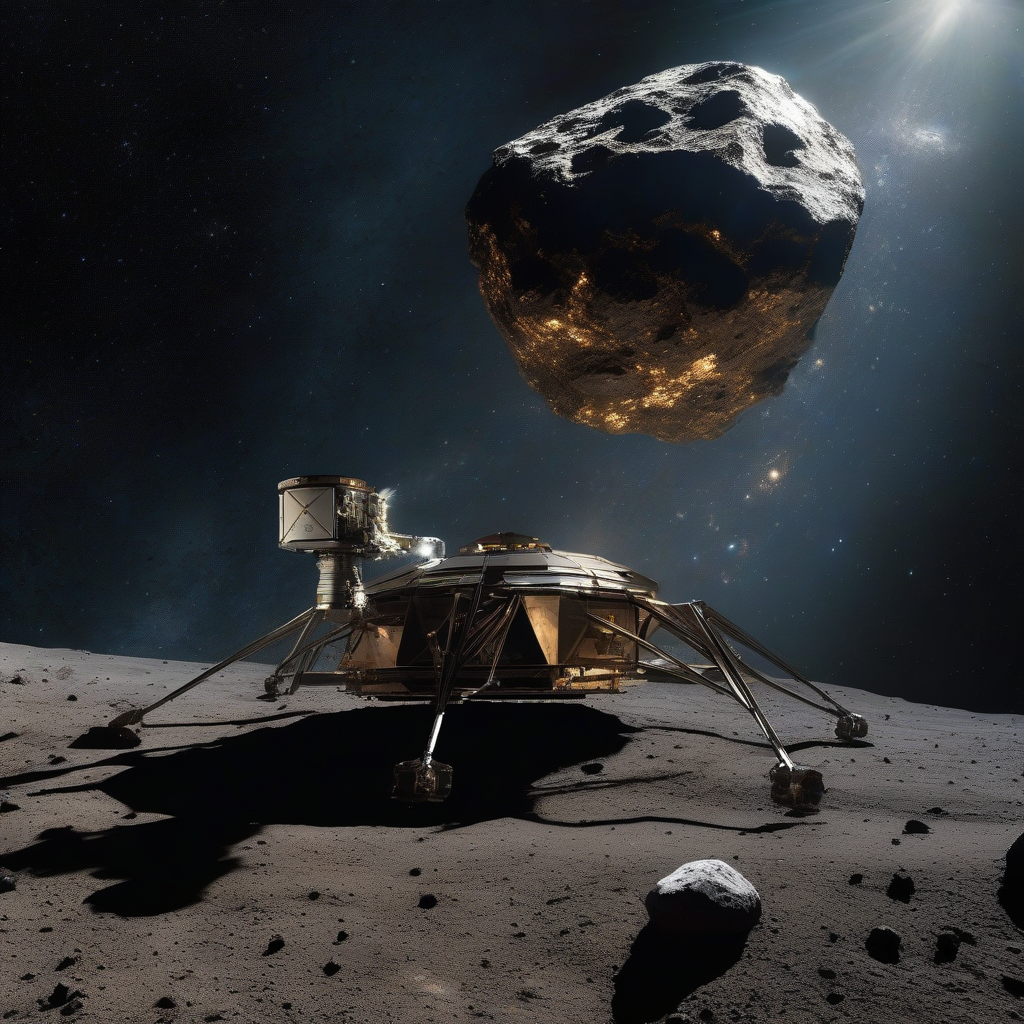# What are 'Space Resources' and How Will Asteroid Mining Support Deep Space Exploration?
Imagine a future where spacecraft don’t need to carry all their supplies with them on long journeys. Instead, they gather water, metals, and even oxygen from the very celestial bodies they visit. This isn’t science fiction—it’s the emerging field of space resource utilization. As humanity sets its sights on deeper space exploration, the concept of mining asteroids and other celestial objects is rapidly evolving from a bold idea to a practical solution.
In this blog post, we’ll explore what space resources are, how asteroid mining could work, and why tapping into these extraterrestrial supplies is key to unlocking the full potential of human and robotic exploration beyond Earth.
---
What are 'Space Resources'?
In the context of space exploration, space resources refer to materials that can be extracted from celestial bodies like asteroids, the Moon, or Mars and used to support human or robotic activities. These resources include essential elements and compounds such as:
- Water: Found in the form of ice on the Moon, asteroids, and Mars, water can be split into hydrogen and oxygen for rocket fuel or used to sustain astronauts.
- Metals: Asteroids are rich in valuable metals like iron, nickel, cobalt, and even rare platinum-group metals, which could support construction in space.
- Oxygen: Extracted from lunar regolith or Martian soil, oxygen could be used for breathing or as part of fuel systems.
- Volatiles: These are compounds like carbon dioxide, ammonia, and methane, which can be harnessed for fuel production or life support.
The ability to utilize these resources could reduce the cost and complexity of space missions. Instead of launching everything from Earth—a process that costs thousands of dollars per kilogram—astronauts could "live off the land" while exploring distant worlds.
---
Why Do We Need Space Resources?
The Challenges of Deep Space Exploration
Exploring deep space—whether it’s sending humans to Mars, establishing a Moon base, or venturing to the outer planets—comes with enormous logistical hurdles. For instance:
- Rocket fuel: Spacecraft need large amounts of fuel to leave Earth and travel through space. Carrying all the fuel for a round trip to Mars would make missions prohibitively expensive.
- Life support systems: Long-duration missions require vast quantities of water, oxygen, and food to sustain astronauts.
- Structural materials: Building infrastructure, like habitats or repair facilities, in space requires materials that are costly to launch from Earth.
Space resources offer a solution: if we can extract and process materials from celestial bodies, we’ll reduce dependence on Earth-based resupply missions. This opens the door to sustainable, long-term exploration.
NASA’s Vision for Space Resource Utilization
NASA has been at the forefront of exploring how space resources can support its ambitious missions. For example:
- Artemis Program: NASA’s return to the Moon aims to establish a sustainable human presence by the late 2020s. This includes studying lunar ice deposits at the Moon’s south pole, which may serve as a critical source of water and oxygen.
- Mars Sample Return and Beyond: Future missions to Mars will focus on identifying resources like water ice, which could support a human presence on the Red Planet.
- ISRU (In-Situ Resource Utilization): NASA has already tested technologies for extracting oxygen from the Martian atmosphere, such as the MOXIE experiment on the Perseverance rover.
These efforts lay the groundwork for using space resources to support human life and create a self-sustaining infrastructure in space.
---
How Will Asteroid Mining Work?
Asteroids are some of the most resource-rich objects in the solar system. Many are remnants from the early formation of planets, containing vast quantities of metals, water, and other valuable materials. But how exactly would asteroid mining work in practice? Let’s break it down.
Step 1: Identifying the Right Asteroid
Not all asteroids are created equal. They come in three main types:
- C-type (carbonaceous): These asteroids are rich in water and organic compounds, making them ideal for extracting water for fuel and life support.
- S-type (silicaceous): These contain metals like iron, nickel, and magnesium.
- M-type (metallic): These are composed primarily of rare metals, such as platinum and gold.
NASA and other organizations are already cataloging near-Earth asteroids (NEAs) to identify those most suitable for mining. Missions like OSIRIS-REx, which successfully returned samples from asteroid Bennu in 2023, provide crucial insights into the composition of these objects.
Step 2: Harvesting Resources
Asteroid mining would involve robotic spacecraft designed to extract and process materials. Key steps might include:
- **Landing
